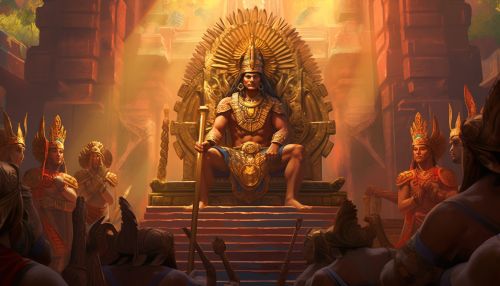Aztec Government
Structure of the Aztec Government
The Aztec Empire's government was an intricate combination of a theocracy, monarchy, and a tributary system. The emperor, known as the Tlatoani, was the supreme ruler, and beneath him was a hierarchical structure of priests, nobles, and commoners. The Tlatoani was considered a divine figure, and his decisions were often influenced by the priesthood, who interpreted the will of the gods.


Role of the Tlatoani
The Tlatoani was the central figure in the Aztec government. He was the military leader, the chief judge, and the ultimate authority on all matters of state. The Tlatoani was chosen by a council of nobles, known as the Pipiltin, from among their own ranks. Once chosen, the Tlatoani ruled until his death, at which point a new Tlatoani was selected.
The Pipiltin and Nobility
The Pipiltin, or nobility, were a crucial part of the Aztec government. They were the ruling class and were responsible for selecting the Tlatoani. The Pipiltin were made up of high-ranking warriors, priests, and the relatives of the Tlatoani. They held significant power and were often appointed to important positions within the government.
The Calpulli and Commoners
Beneath the Pipiltin were the commoners, organized into groups known as Calpulli. Each Calpulli was led by a group of elders, who were responsible for the administration of their community. The Calpulli were responsible for various tasks such as farming, construction, and warfare.
The Judiciary System
The Aztec government had a complex judiciary system. The Tlatoani was the highest judge, but there were also lower courts for commoners and nobles. These courts were presided over by judges who were appointed by the Tlatoani. The judiciary system was strict, and punishments for crimes were often severe.
The Role of Religion
Religion played a significant role in the Aztec government. The Tlatoani was considered a divine figure, and the priesthood held significant influence. Priests were responsible for interpreting the will of the gods, and their interpretations often influenced the decisions of the Tlatoani and the Pipiltin.
Tributary System
The Aztec government was also a tributary system. Conquered cities and regions were required to pay tribute to the Aztec Empire. This tribute often came in the form of goods, such as food, textiles, and precious materials.
